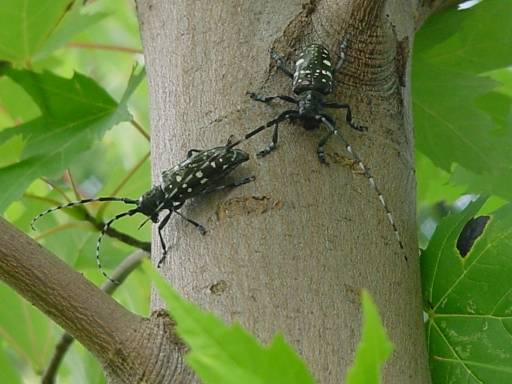Asian longhorned beetle check could prevent infestation
Listen
Asian longhorned beetles (Image courtesy of USDA)
A few minutes looking at the trees in your yard could prevent a potential environmental and economic nightmare scenario. It’s the right time of year to look for damage.
The Asian longhorned beetle has killed off more than 130,000 trees in New York, New Jersey and other Eastern states since it was discovered in this part of the world in 1996. It attacks maples, elms, ash and poplar trees among others.
August is the best time to check your trees for signs of infestation, according to Rhonda Santos of the U.S. Department of Agriculture.
“You can take a look at the trees on your property or in your community, just by walking up to your tree to see if there are any exit holes on it,” she said. “Certainly, a tree with holes on it is concerning. If you do have holes, we would want to know about it or at least tell you what’s going on.”
The beetles ride into the country on cut wood from Asia. Santos says if you see the beetle, you will know it.
“It’s a fairly large insect, its body itself is an inch inch and a half long,” she said. “Obviously, it’s got six legs and it’s got long antennae, which are banded black and white — they’re longer than the insect’s body and it’s got spots on its back.
“If you see this insect — it’s fairly striking,” she said. “It will give you pause, you’ll want to know what it is.”
Once a tree is infested, there is no other course but to cut it down and remove it.
WHYY is your source for fact-based, in-depth journalism and information. As a nonprofit organization, we rely on financial support from readers like you. Please give today.





